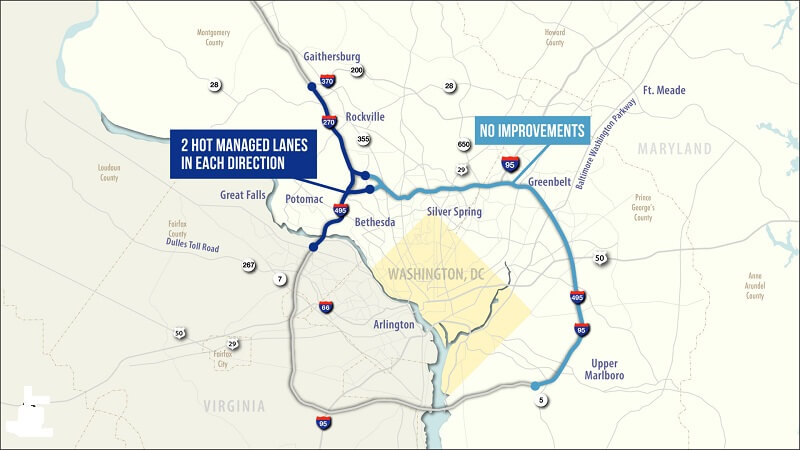
By Arthur Katz
The writer is a resident of Rockville.
The Maryland Department of Transportation in May announced that it would change its proposed plan for construction of toll lanes on Interstate 495 and I-270 by deferring from immediate action (but not permanently) 30 miles of toll lanes on I-495 – from the eastern I-270 spur to the MD5 highway interchange. MDOT now calls this the “preferred alternative.” The proposed toll lanes on the Beltway would end between the two I-270 spurs – going from five to three lanes – a formula for gridlock.
In Maryland Matters in July, I predicted that change would create a “chokepoint” on the Beltway between the spurs that would further weaken an already dismal toll lane project.
Sadly, my prediction has been validated with the final report on this new revised version of the toll lane plan – the Supplemental Draft Environmental Impact Statement. The result is indeed a mess.
It is a lesson in the perils of politics dominating transportation imperatives, where decisions are made first and planning is left to clean up the mess. It leaves you wondering if the whole approach to this project is the classic foot-in-the-door strategy, start building anything so it leaves no way to stop the next step.
Why is this project a mess?
- The Maryland Department of Transportation refuses to acknowledge that its new traffic management system (called the I-270 Innovative Congestion Management Project) currently being implemented on I-270, will address many of the traffic issues on I-270 over the next 25 years without new construction.
MDOT’s own data shows the travel times in 2045 for southbound I-270 morning trips from I-370 to destinations such as River Road, Clara Barton Parkway and George Washington Parkway will be 40% to 50% faster for the no build alternative than the former travel times for pre-pandemic trips.
For example, the trip from I-370 to River Road on the Beltway will take half the time it took pre-pandemic (13 minutes vs. the pre-pandemic 26.2 minutes, average speed for the trip 46 mph vs. 21 pre-pandemic).
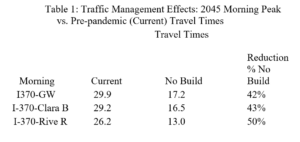
Table by Arthur Katz.
If you started a trip at Clarksburg and traveled to the River Road exit you would save close to 20 minutes, now through 2045.
You would think that MDOT would be proud of this project because current and future commuters would love it. But it insists on telling public officials its benefits are temporary – if temporary means at least 25 years. Of course, acknowledging its value would undermine the rationale for the 495/270 toll project.
- The disastrous chokepoint created by the decision to terminate the Beltway toll lanes between the I-270 spurs means that the no build alternative has faster round trips and evening peak trips (significant shorter travel times) compared to the general purpose (GP) lanes of the toll road (the preferred alternative).
The preferred alternative has two parts, two toll lanes and GP lanes that are the free lane part of the toll expansion – where 85% to 90% of the commuters travel.
Specifically, for travel between I-370 and the critical exits of the George Washington and Clara Barton parkways and River Road, the no build alternative round trips (morning and evening) to and from these exits are 7.3, 8.6 and 5 minutes faster, respectively, than the GP lanes of the preferred alternative. The no build evening trips are even more dramatic – 9.9, 11.3 and 6.4 minutes faster, respectively, than the GP lanes – because the chokepoint drives congestion back into the I-495/I-270 split and westward toward River Road/Clara Barton.
In the contrast, the same round trip from I-370 to River Road and back in the previous version of the project that had no chokepoint, projected the GP lanes 12 second faster than the no build. With the chokepoint, the GP trip is now projected to be 5 minutes (300 seconds) slower.
For the Clara Barton without the chokepoint the GP evening trip was 2 minutes faster than the no build. With the chokepoint, the GP trip is 11 minutes slower, a flip of almost 15 minutes.
There is a similar pattern for Beltway trips through the chokepoint. The GW Parkway to 355 evening trip in the latest version of the project has the no build alternative 5 minutes faster than the GP trip.
The bottom line is the chokepoint undermines the idea of improving goods and services movement and accommodating current traffic and long-term growth. The preferred alternative is not enhancing reliability and certainly not addressing accommodating homeland security.
In a crisis evacuation, the chokepoint will disastrously hinder east/west and north/south (I-270) highway flow.
- It is a mystery why we are talking about building anything on I-270.
First, MDOT’s own traffic projections for toll road construction on I-270, between I-370 and I-495 (where I-270 meets the Beltway) reveals the travel time morning and evening trips for the no build alternative vs. the GP lanes are within one minute of each other – the margin of error. The toll lanes have a modest 2- to 3-minute advantage. So where is the benefit?
Second, we have already discussed the existing MDOT traffic management project that will dramatically reduce travel times for no build trips between I-370 and various Beltway exits.
Finally, despite the hopes of some, there is no evidence that changes in the I-370 to I-495 portion of I-270 will produce any benefits for I-270 north of I-370 (where the toll lanes would end). MDOT has produced colored-coded maps of traffic speeds from Frederick to I-495 for the morning and evening traffic peaks.
There are no meaningful differences in the traffic speed patterns between the no build and the preferred alternatives north of I-370. It is not surprising, since when the toll lanes end the no build and preferred alternatives are identical, with the same physical configuration, e.g., number of lanes, as well as the same pattern of traffic coming into or leaving the highway from the entry/exit points (interchanges) within any given highway segment.
In contrast to these insufficient traffic benefits, the proposal for adding a lane to I-270 will require the removal of the separator lane between the local and main travel lanes to become a new toll lane. Ironically, part of the separator includes the northbound and southbound support structures for the Montrose, Falls Road, MD 28 and Shady Grove interchanges.
To avoid complete collapse of the interchange deck, years of reconstruction will be required (upward of five years). The ensuring construction chaos will disrupt I-270 flow and damage the economic, environmental and community life of Rockville as well as cost upward of a billion dollars.
For perspective, the proposed 14 lanes under the preferred alternative are in a residential area that already has 12 lanes. The widest part of the New Jersey Turnpike has 12 lanes (but passes through an industrial area) and the Virginia Beltway toll road – which has become the gold standard for MDOT planning – has only 12 lanes. If MDOT insists it can’t manage 12 lanes, why should we believe it will be better at 14.
The inevitable conclusion is that in relation to the environmental, human and financial costs, the proposed preferred alternative toll road segment on I-270 is a gigantic waste of money.
This project has been driven by the political idea that “I built it and you do not have to pay for it.”
But paying is a relative thing. The proposed current plan gives a free highway lane (the HOV lane on I-270) to the future contractor, likely Transurban, to make money. How much is a lane on a heavily traveled highway worth? A lot.
The basic question is with telework, autonomous cars, lingering COVID-19, climate change and artificial intelligence looming now or in the near future is this the right moment for an investment of billions destined to last 50 years as a concrete monument to a problem that it does not solve – even if it seems to be paid for by other people’s money?

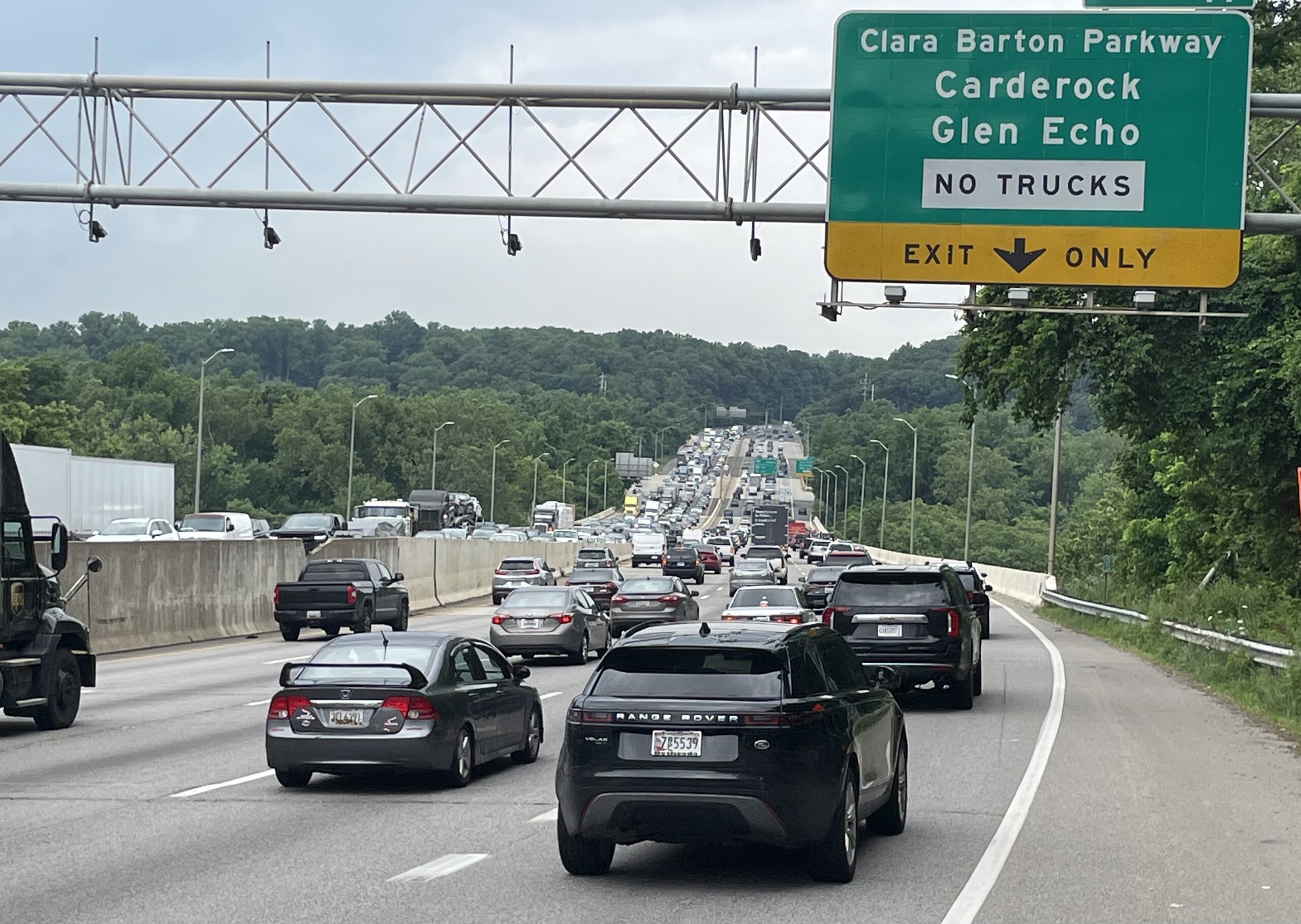
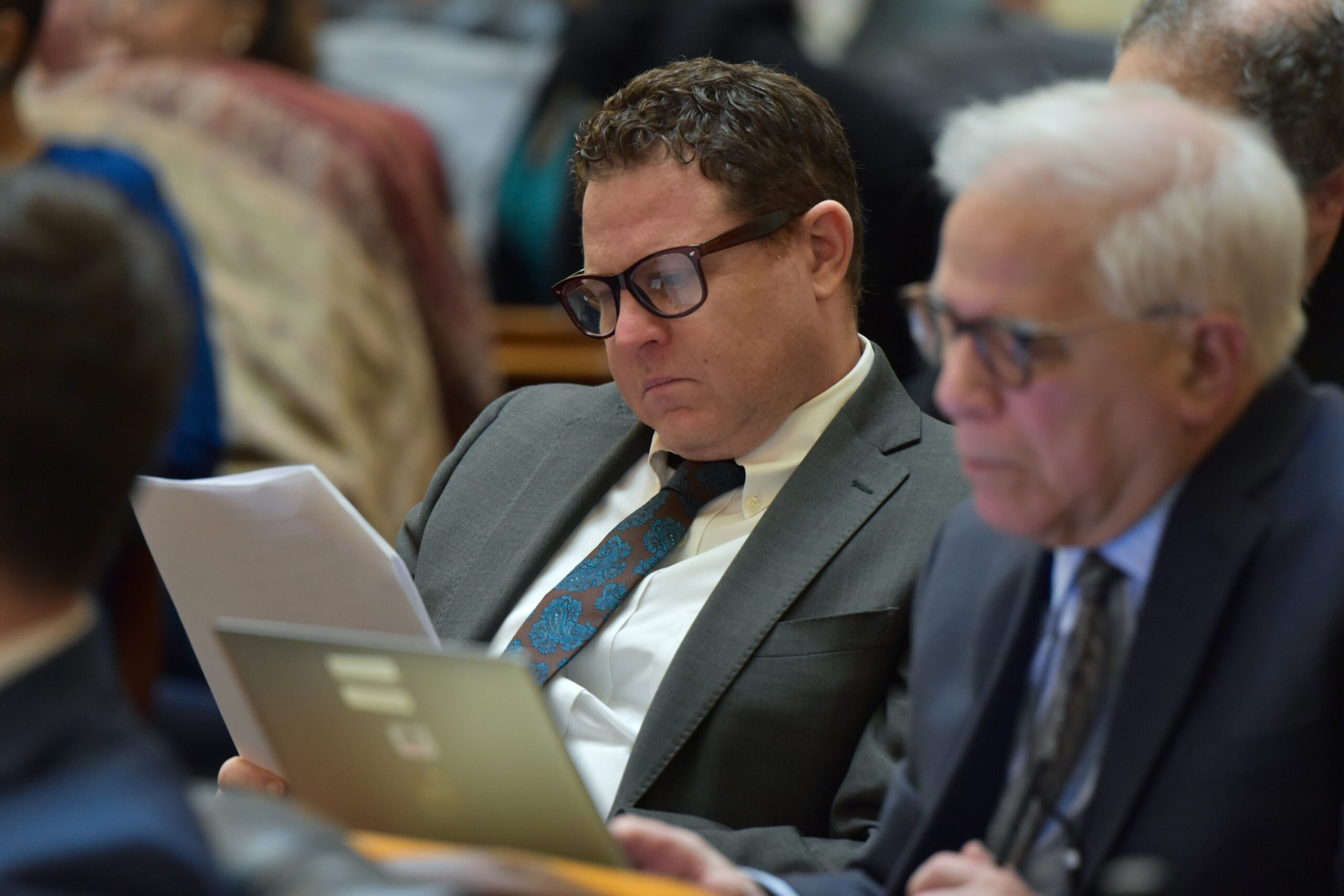
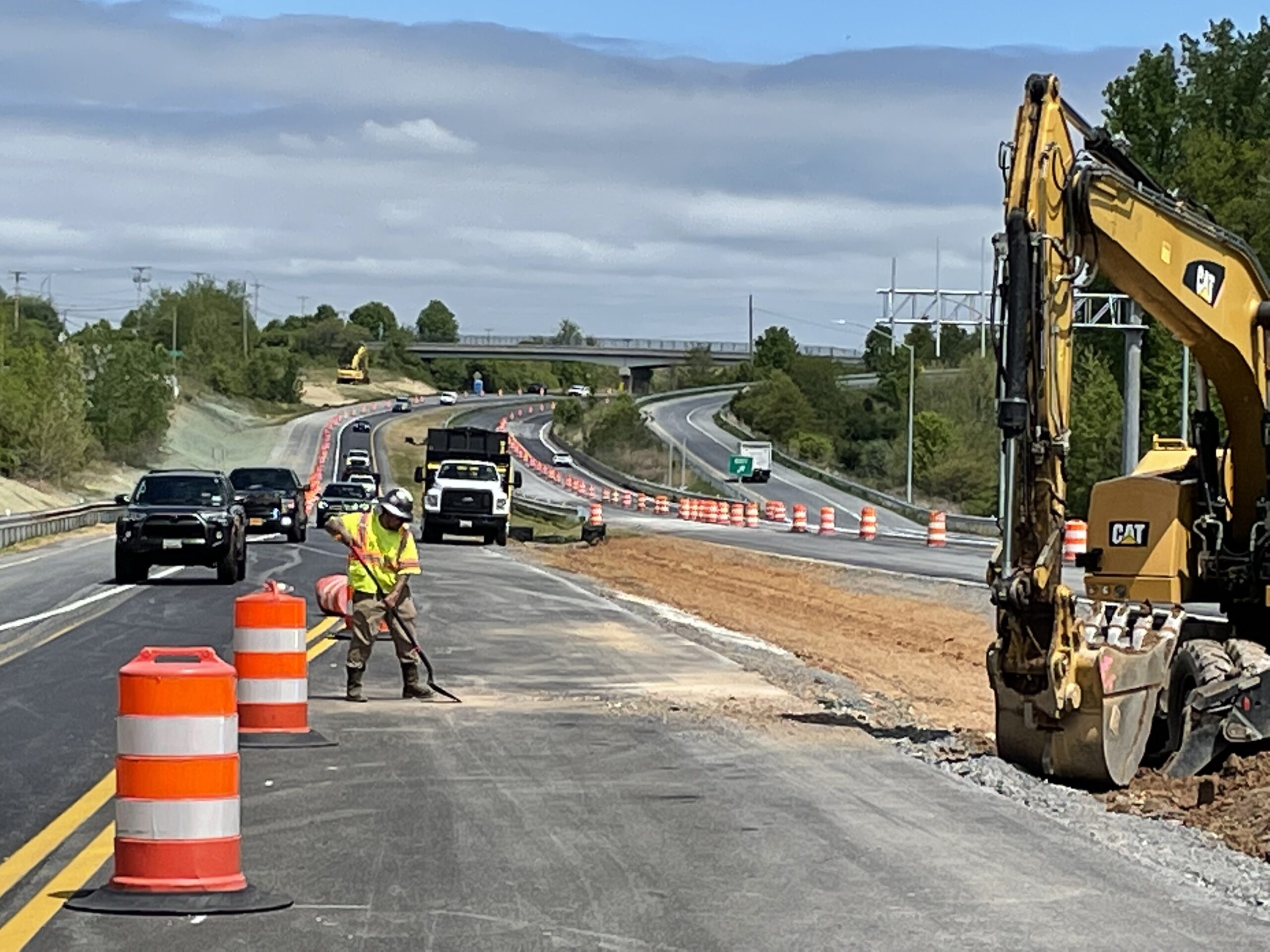
 Creative Commons Attribution
Creative Commons Attribution